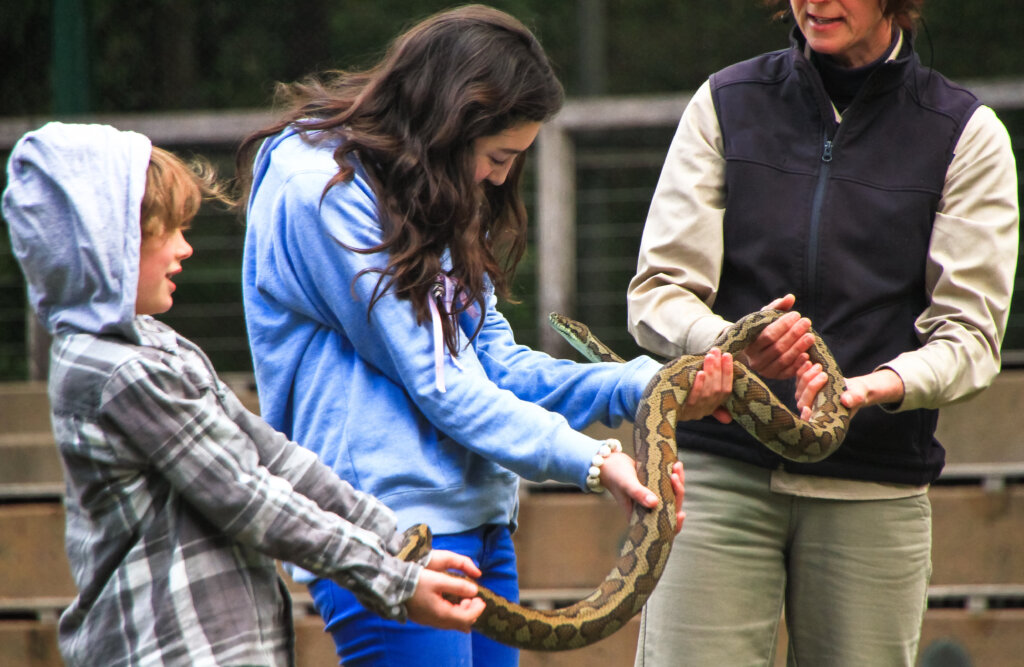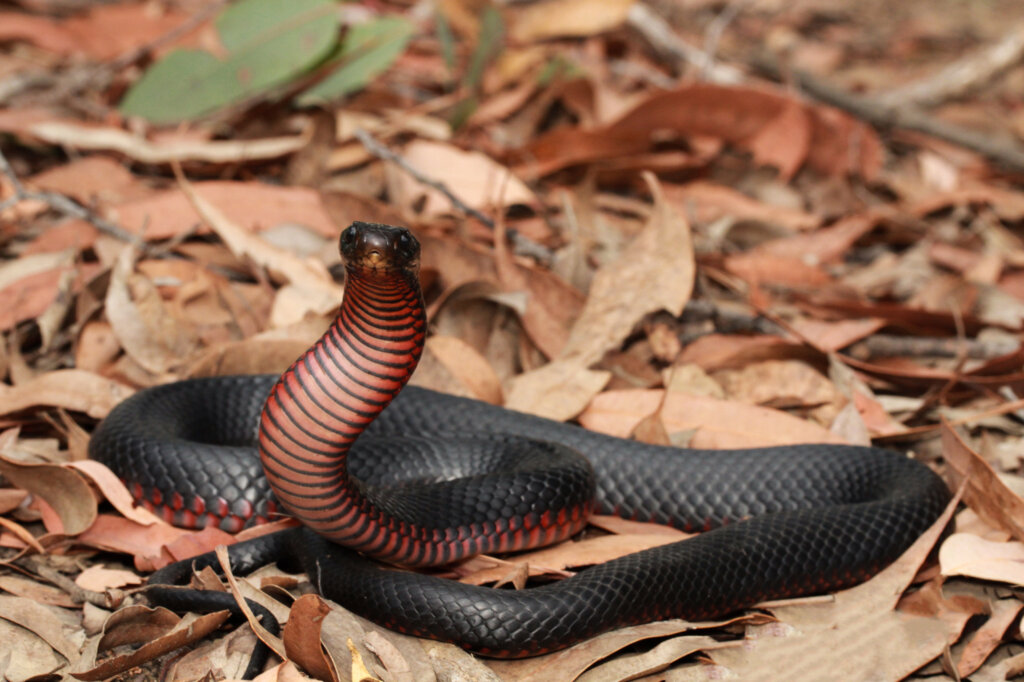Snakes – Awesome, Not Fearsome!
With Jen Cockley

Why Snakes Make Great Pets
Snakes often get a bad rap, but they’re truly fascinating and can make wonderful pets. If you’re a pet lover or just curious about these amazing creatures, this guide will help you see snakes in a new light. From their unique anatomy to their role in the environment, there’s so much to appreciate about snakes.
Lifelong Companions
Did you know that with proper care, most snakes can live for 20 to 30 years? This means they can be your best friend for a long time, offering companionship just like any other pet.
Unique Personalities
Snakes have distinct personalities. They might not wag their tails, but they can be just as engaging as your fluffy friends. You can even take them outdoors for some exploration time, giving them unfiltered access to natural UVB light. Just like Jen does, use an escape-proof mesh playpen with some hides and keep a close eye on them.
Stunning Colours
One of the most exciting aspects of keeping a snake is the variety of colors and patterns. From the brilliant whites and yellows of an albino Darwin python to the gorgeous red and orange hues of a Bredli, there’s a snake out there that will capture your heart. Just ensure they are bred or sourced from reputable places.
Customizable Enclosures
Building and decorating snake enclosures can be a fun and rewarding activity for the whole family. Think of it like a playground—if there’s only one swing, it’s boring. But add slides, sandpits, and a flying fox, and it’s awesome! With so many enclosure types available today, you can create an amazing habitat for your snake to explore.
Did You Know? Adult snakes are best fed about every 4 weeks, increasing the time between feeds depending on the size of the food. People often forget that snakes are designed to have big meals infrequently.
Snake Anatomy (10 things you didn’t already know)
- Muscles Galore
Handling snakes is a unique experience. Snakes have over 10,000 muscles in their bodies, compared to the 700-800 muscles humans have. - Grip Strength
Some pythons can even hold onto branches or perches by the tips of their tails. - Tongue-Smellers!
Snakes can’t smell through their nostrils. Instead, they use their tongues to gather scent molecules from the air and rub them on the roof of their mouth, where a unique structure called the Jacobson’s organ identifies the scents. - Solar-Powered Reptiles
Snakes are solar-powered! (Kind of.) Snakes are, in fact, not cold-blooded. Instead, they get their warmth from external sources—like the sun—which means they are ectothermic and need the sun to regulate their body temperature. - Heat-Sensing Pits
Non-venomous snakes have heat-sensing pits around their mouths. These help them detect the heat from their surroundings, allowing them to catch prey in complete darkness and recognize their food. - One-Lung Wonder
Snakes don’t always have 2 lungs! They have evolved to use their right lung over their left, so on X-rays and scans of snakes, you’ll usually find a well-formed right lung and a very small or missing left lung. - Not All Tails & Fangs
Snakes are not all tails! The tail on a snake is usually only the last 10cm (approx.) Pythons do not have fangs. Instead, they have up to 80 small recurved (backward facing) teeth and two extra rows in the middle of their top jaw. - Feeding Made Easy
Feeding snakes is straightforward. Hatchlings should be fed weekly until they’re at least one year old. Juveniles eat every 10-14 days, while adults can be fed about every four weeks, gradually increasing the time between feeds as the food size increases. Remember, snakes are designed to have big meals infrequently. - Digesting With Warmth
After eating, snakes use their body warmth and the warmth from their food to digest. This usually means they’ll find a warm spot to hang out in after a meal. - Reproduction
Some snakes lay eggs (oviparous), while others give birth to live young (viviparous). Interestingly, some snakes hold their eggs inside their bodies until they hatch (ovoviviparous).
Environmental & Historical Facts

Ecosystem Importance
Snakes are key predators that help control pest populations of rabbits and rodents, making them crucial for maintaining ecological balance.
Ancient Origins
Snakes evolved between 100-140 million years ago, making them one of the youngest reptile species. Despite their relatively recent appearance, they’ve adapted remarkably well to their environments.
Snake Facts
Unique Eye Protection
Snakes don’t have eyelids. Instead, they have a clear protective scale over their eyes called a spectacle, which sheds along with their skin.
Tasmanian Snakes
Tasmania has only three species of snakes, all of which are venomous. If you want to keep a snake in Tasmania, your options are the Tiger snake, Lowland Copperhead, or White-lipped snake.
Export Restrictions
Australia has banned the export of native species. This means most Australian snakes found overseas are somewhat related, making conscious breeding efforts essential to prevent inbreeding.
Conclusion
Snakes are amazing creatures that deserve more appreciation and less fear. Whether you’re considering one as a pet or just curious about them, understanding their unique qualities and roles in the environment can help you see them in a new light. If you’re ready to learn more or even welcome a snake into your home, do your research and ensure you’re prepared for a lifelong commitment.
Happy herping! 🐍

Jen Cockley
